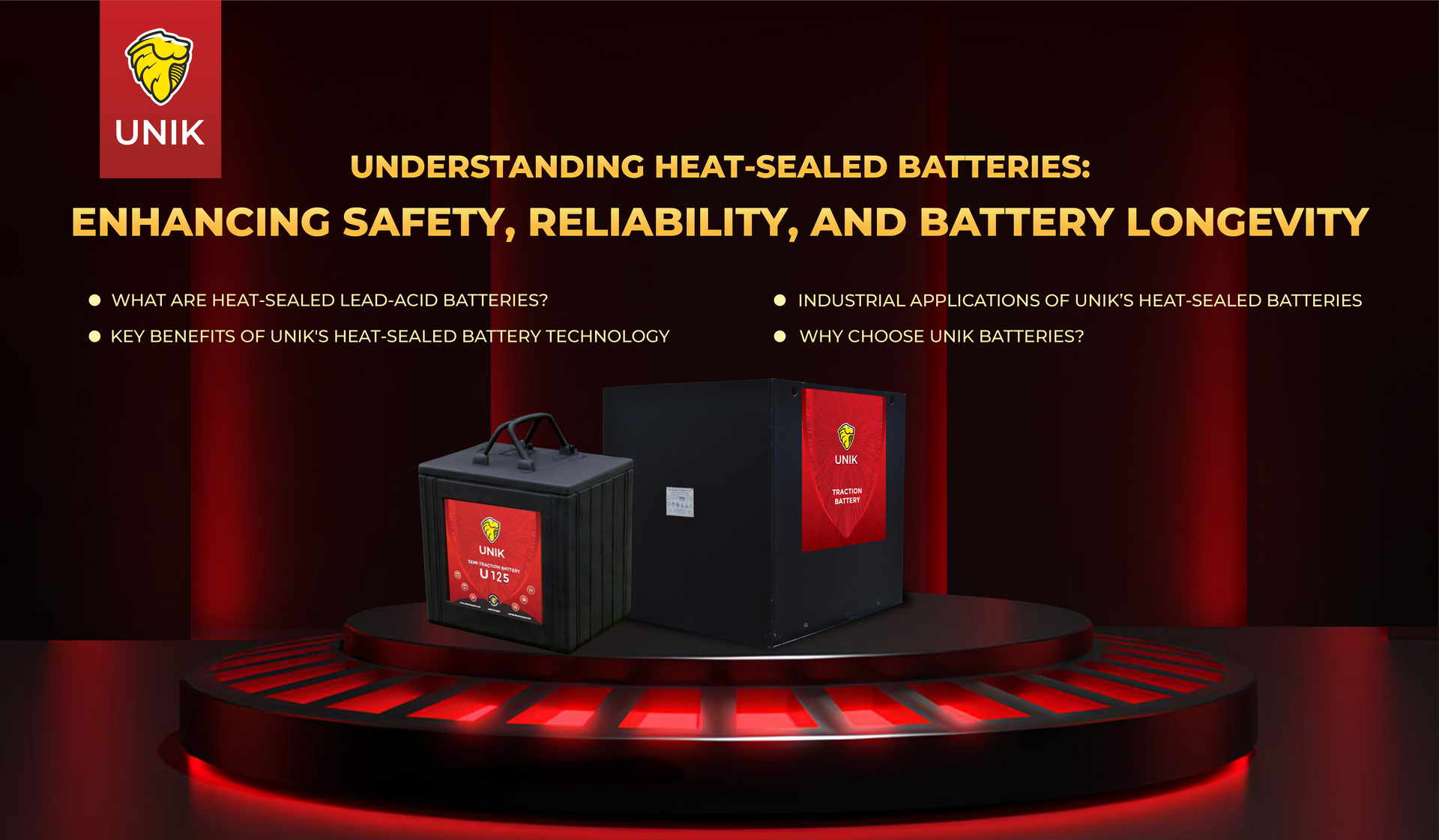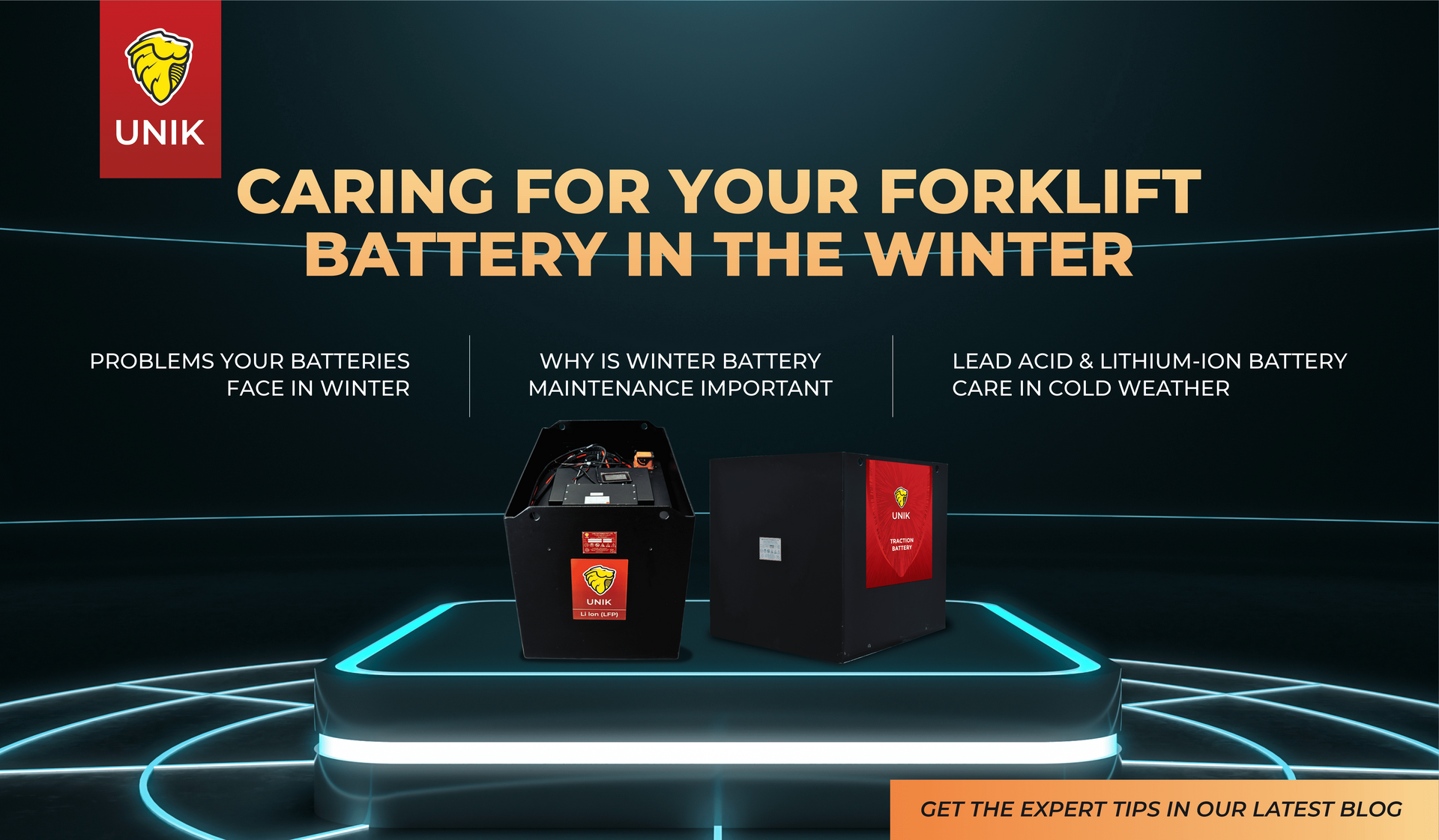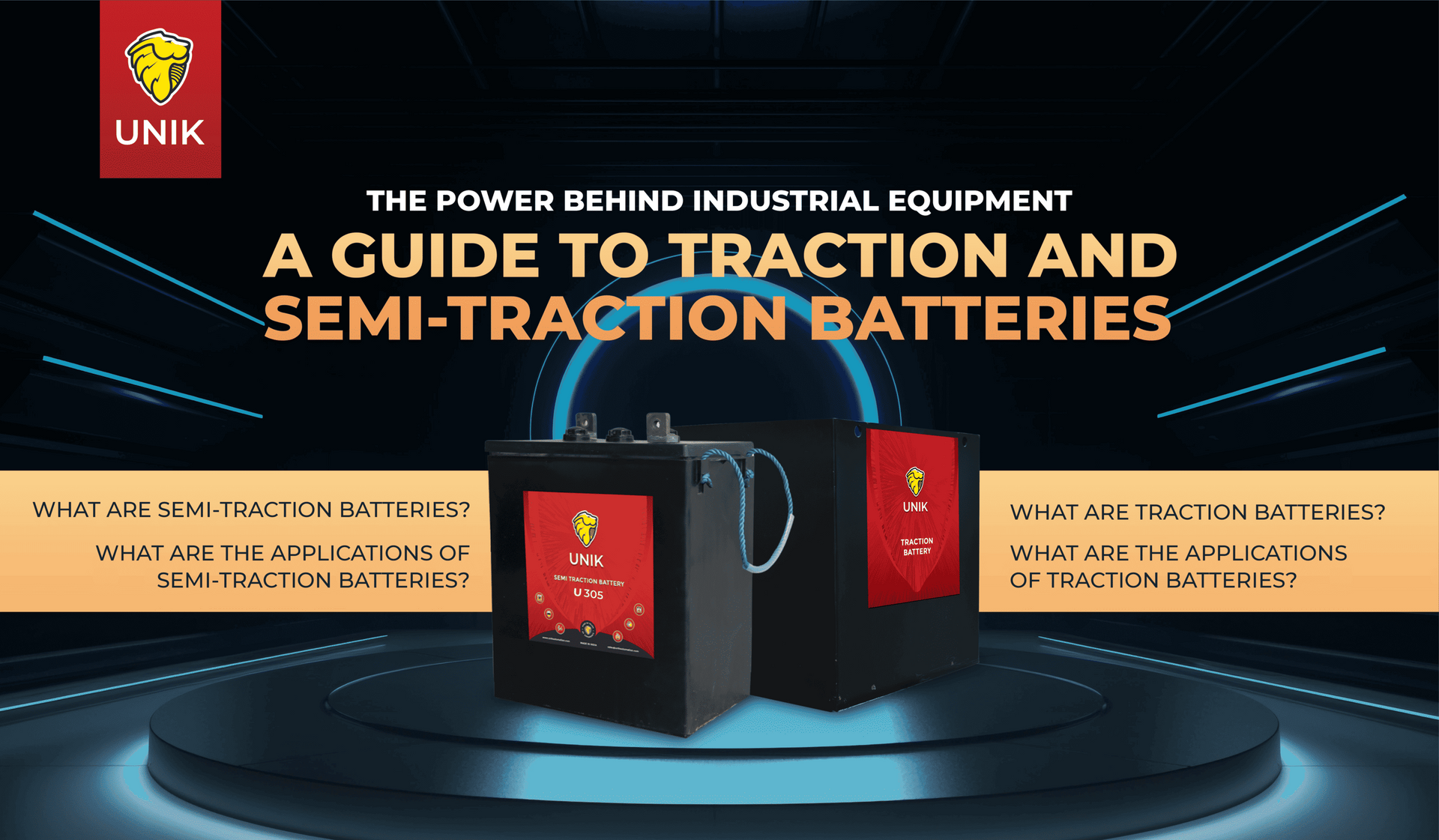Unik Techno • August 20, 2020
My 12v 150Ah lead acid battery got leaked through vents due to improper unloading. Should I refill acid to it?
What happens if lead acid battery runs out of water?
Based on your clear indication that the acid has leaked through the vents during unloading and presuming that there has been no breakage of containers by any physical damage the steps to be taken is as follows:
Check the specific gravity of the electrolyte in the battery. Procure sulphuric acid of the same specific gravity for filling.
If sp. gr. not clear or if you are unable to measure please contact manufacturer and arrange to get sulphuric acid of same specific gravity.
Ensure that the battery is not kept dry since internal components can get damaged due to a exothermic reaction which starts on the surface of the negative plates and this in turn can damage the separators and other battery components.
In case the entire qty of electrolyte has spilled you may fill demineralised or distilled water till such time as the electrolyte is available. As soon as electrolyte is available this water shall need to be thrown out and acid shall need to be poured in. In this case you may have to fill acid of slightly higher sp. gr. or adjust sp. gr. at the end of charge with remote or onsite help from manufacturer.
Ensure that refilling is done to the recommended level and also ensure that level is same in all cells.
It is not possible to recommend the sp. gr. of acid since different batteries need different concentration of electrolyte.
A traction battery needs 1.280 whereas a single cell stationary battery needs 1.210 or 1.240 depending on whether it is NDP or TBS type. A home inverter battery needs 1.240 sp. gr. acid. These are the details pertaining to a fully charged battery as per IS specification.
Further if the battery was in a discharged condition the gravity shall be lower and refilling has to be done accordingly of lower sp. gr. acid.

Battery safety is critical in industries relying heavily on robust, dependable power sources such as electric forklifts, golf carts, and industrial machinery. One technology significantly advancing battery safety is heat-sealed battery construction . At UNIK Batteries, we utilise advanced heat-sealing techniques to provide superior safety, reliability, and longer battery life for demanding industrial applications. What Are Heat-Sealed Lead-Acid Batteries? Heat-sealed lead-acid batteries are constructed using a specialised sealing process where battery casings are permanently bonded through heat application. Unlike traditional battery sealing methods using adhesives or mechanical seals, heat sealing creates a highly durable, airtight enclosure, ideal for demanding industrial environments. Key Benefits of UNIK's Heat-Sealed Battery Technology Electrolyte Leakage Prevention Higher resistance levels, which may impact power output. Reduced charging efficiency, resulting in longer charge times. Increased operational strain, potentially leading to faster wear and tear. Here is why winter battery maintenance is essential: Proper care reduces the risk of cell damage due to freezing temperatures. Batteries that are well-maintained offer operational efficiency. Regular maintenance extends the life of your batteries, saving on replacement costs. Taking these steps will keep your i ndustrial forklift battery in peak condition, even when temperatures plummet. Lead Acid & Lithium-ion Battery Care in Cold Weather Maintenance of Lead Acid Batteries Lead acid batteries are more sensitive to cold temperatures because their electrolyte solution can freeze, particularly when the battery is in a low-charge state. For efficient battery care in cold weather, follow these tips: Charge fully after each use as a fully charged lead-acid battery is less likely to freeze. Store batteries in a temperature-controlled environment indoors or in a heated area to protect them from the elements. Inspect the battery for cracks or leaks, as these can worsen in the cold. Lead-acid batteries need adequate water to function correctly, so check and refill water levels routinely. Clean terminals regularly to prevent corrosion and improve conductivity. Lithium-ion Battery Maintenance While lithium-ion batteries fare better than lead acid batteries in colder weather, they still require care to avoid performance drops. Follow these tips for top-notch lithium-ion battery maintenance: When starting your material handling equipment, give your battery some time to warm up just as you would allow your car battery to reach an optimum temperature before driving. Lithium-ion batteries should not be charged at sub-zero temperatures, as this can lead to permanent damage. Lithium-ion batteries are more efficient when they maintain a moderate charge level in winter between 30-80%, to reduce strain on the cells. Following these steps can help ensure that both l ead acid and lithium-ion battery maintenance routines are winter-ready. Winter can be challenging for industrial forklift batteries , but with consistent battery care in cold weather , you can protect your investment and keep your operations running smoothly. By paying attention to winter battery maintenance and adjusting your care strategies for different battery types, you can enhance battery performance and extend its life, no matter how cold it gets. Protect your operations all season long! For more tailored solutions, explore our lithium-ion battery and lead acid battery sections to find the best fit for your material handling operations. Contact us today to learn how our battery solutions can power your success.

When it comes to powering industrial equipment, the choice of battery plays a crucial role in ensuring efficiency and reliability. Traction and semi-traction batteries are key players in this arena, each designed to meet specific operational needs. This blog delves into what these batteries are and their applications in industrial settings. What are Traction Batteries? Traction batteries are specialised rechargeable batteries used to power heavy-duty industrial equipment. Unlike traditional starter batteries, they are engineered to provide reliable and consistent power over extended periods, making them suitable for applications that require deep discharges and frequent recharging. These batteries are typically made up of several cells connected in series, with the most common types being lead-acid traction batteries and lithium-ion . Lead-acid traction batteries are favored for their cost-effectiveness and durability, whereas lithium-ion traction batteries are sought after for their high energy density and lower maintenance requirements. What are the Applications of Traction Batteries? Traction batteries are widely used for rigorous applications in sectors, such as golf carts, renewable energy systems, medical equipment, and power backup systems. Material handling and industrial applications benefit significantly from these batteries. Traction batteries for material handling equipment are used for powering forklifts, pallet jacks, and other material-handling equipment. The high capacity and durability of lead-acid traction batteries and lithium-ion traction batteries make them perfect for these tasks. They ensure reliable performance and longevity in demanding environments, including warehouses and factories that rely on robust power supply. What are Semi-traction Batteries? Semi-traction batteries, also known as monobloc batteries, are engineered for exceptional performance in industrial settings where consistent power is required over extended periods. These batteries are specifically designed to handle repetitive and intense cycle use. A semi-traction battery is constructed with multiple electrically connected cell compartments containing electrodes, electrolytes, terminals, and separators. These cells can be arranged in series or parallel configurations to tailor the battery's performance to specific applications. Semi-traction batteries are engineered to endure harsh conditions, including wide temperature fluctuations (-30°C to 60°C) and exposure to shocks and vibrations. What are the Applications of Semi-traction Batteries? Semi-traction batteries are versatile and provide dependable power for various applications where the energy demand is moderate and consistent, but not as intensive as in heavy industrial use. These batteries are particularly effective in settings where a reliable energy source is needed over an extended period. They may be used for less intensive off-grid solar power systems and energy storage applications. Semi-traction batteries are particularly advantageous in golf carts and industrial cleaning equipment . Golf carts benefit from the battery’s ability to endure frequent discharge cycles, vibrations, and temperature variations, providing reliable power in varied conditions. Similarly, semi-traction batteries excel in industrial cleaning equipment, such as floor scrubbers, where they provide the necessary power to operate efficiently over long periods, withstanding the rough conditions typical in industrial environments. In the world of industrial equipment, the choice between traction and semi-traction batteries can significantly impact operational efficiency and longevity. Traction batteries provide robust, reliable power for heavy-duty applications, such as material handling equipment, while semi-traction batteries offer a dependable solution for moderate energy needs, like those found in golf carts and cleaning machines. By selecting the right type of battery for each specific application, businesses can ensure uninterrupted operations, reduce downtime, and maintain consistent performance in all conditions. UNIK recognises the diverse battery needs of different industries and is here to help you find the perfect fit. Contact us today to learn how our battery solutions can power your success.

When it comes to powering industrial equipment, the choice of battery plays a crucial role in ensuring efficiency and reliability. Traction and semi-traction batteries are key players in this arena, each designed to meet specific operational needs. This blog delves into what these batteries are and their applications in industrial settings. What are Traction Batteries? Traction batteries are specialised rechargeable batteries used to power heavy-duty industrial equipment. Unlike traditional starter batteries, they are engineered to provide reliable and consistent power over extended periods, making them suitable for applications that require deep discharges and frequent recharging. These batteries are typically made up of several cells connected in series, with the most common types being lead-acid traction batteries and lithium-ion . Lead-acid traction batteries are favored for their cost-effectiveness and durability, whereas lithium-ion traction batteries are sought after for their high energy density and lower maintenance requirements. What are the Applications of Traction Batteries? Traction batteries are widely used for rigorous applications in sectors, such as golf carts, renewable energy systems, medical equipment, and power backup systems. Material handling and industrial applications benefit significantly from these batteries. Traction batteries for material handling equipment are used for powering forklifts, pallet jacks, and other material-handling equipment. The high capacity and durability of lead-acid traction batteries and lithium-ion traction batteries make them perfect for these tasks. They ensure reliable performance and longevity in demanding environments, including warehouses and factories that rely on robust power supply. What are Semi-traction Batteries? Semi-traction batteries, also known as monobloc batteries, are engineered for exceptional performance in industrial settings where consistent power is required over extended periods. These batteries are specifically designed to handle repetitive and intense cycle use. A semi-traction battery is constructed with multiple electrically connected cell compartments containing electrodes, electrolytes, terminals, and separators. These cells can be arranged in series or parallel configurations to tailor the battery's performance to specific applications. Semi-traction batteries are engineered to endure harsh conditions, including wide temperature fluctuations (-30°C to 60°C) and exposure to shocks and vibrations. What are the Applications of Semi-traction Batteries? Semi-traction batteries are versatile and provide dependable power for various applications where the energy demand is moderate and consistent, but not as intensive as in heavy industrial use. These batteries are particularly effective in settings where a reliable energy source is needed over an extended period. They may be used for less intensive off-grid solar power systems and energy storage applications. Semi-traction batteries are particularly advantageous in golf carts and industrial cleaning equipment . Golf carts benefit from the battery’s ability to endure frequent discharge cycles, vibrations, and temperature variations, providing reliable power in varied conditions. Similarly, semi-traction batteries excel in industrial cleaning equipment, such as floor scrubbers, where they provide the necessary power to operate efficiently over long periods, withstanding the rough conditions typical in industrial environments. In the world of industrial equipment, the choice between traction and semi-traction batteries can significantly impact operational efficiency and longevity. Traction batteries provide robust, reliable power for heavy-duty applications, such as material handling equipment, while semi-traction batteries offer a dependable solution for moderate energy needs, like those found in golf carts and cleaning machines. By selecting the right type of battery for each specific application, businesses can ensure uninterrupted operations, reduce downtime, and maintain consistent performance in all conditions. UNIK recognises the diverse battery needs of different industries and is here to help you find the perfect fit. Contact us today to learn how our battery solutions can power your success.



